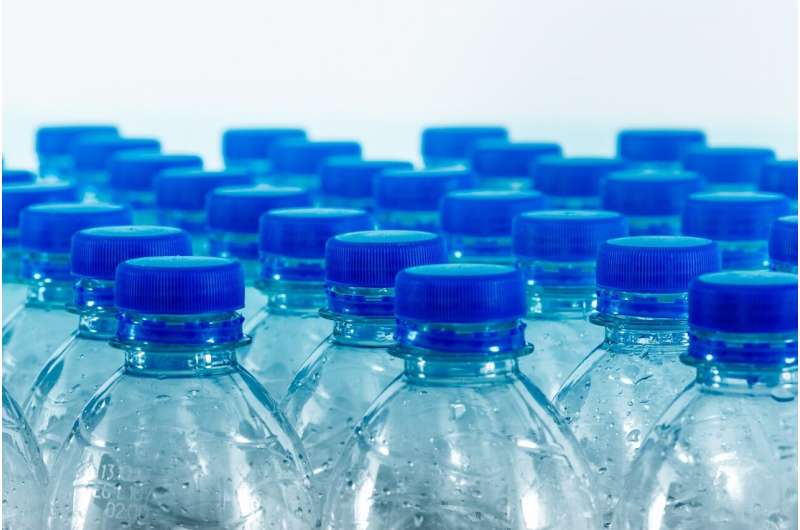Pandemic saw sales of bottled water dip in Asia Pacific

Measures to contain the spread of COVID-19 caused a decline in the sales of bottled water across the Asia Pacific region during 2020, according to a study by the global market research firm, Euromonitor International.
The region has historically accounted for the largest share of bottled water sales, driven by rising health and wellness awareness and a lack of access to safe water, Euromonitor said in a report. But hard lockdowns, including social distancing and home isolation drastically reduced sales.
Lockdown restrictions imposed by the Philippine government, among the longest lockdowns in the world, reduced bottled water sales in the archipelagic country by around five percent to 2,712.4 million liters in 2020, versus the 2,869.3 million liters recorded in the previous year.
"The main factor contributing to the overall sales decline seen in the category during the year was the unavailability of on-trade outlets due to the shutdown of the entire Philippine hospitality industry to on-trade customers throughout the initial lockdown period," Euromonitor said.
As the pandemic pummel the economy, major water concessionaire Manila Water resorted to permanently shuttering its Healthy Family bottled water business unit, citing "recurring losses and the inability to financially sustain business operations."
When the Philippine government eased quarantine restrictions in 2021, bottled water consumption rose by five percent to 2,846 million liters, according to Euromonitor.
Accessibility
Access to clean drinking water is crucial to surviving the pandemic because staying hydrated will help people avoid contracting other diseases counted as comorbidities, said Bonifacio Magtibay, a WHO technical officer for environmental and occupational health.
"If [drinking] water is inadequate, this will lead to dehydration. [The] presence of diseases other than COVID-19 will be counted as comorbidity that will complicate the health of the persons with COVID-19," he told SciDev.Net.
Until the early 1990s Filipinos relied on drinking water from the tap but that changed as consumers started to observe deteriorating water quality, Magtibay said. "Bottled water and water refilling stations mushroomed to address the loss of confidence in piped water systems."
In the future, it may be possible to return to the old practice provided water quality passes the national standards for drinking water quality, Magtibay said.
In India, bottled water which was rapidly gaining in popularity over the last decade, saw dramatic decline in sales due to pandemic-related sales lockdowns in 2020. The pandemic has dealt a severe blow to packaged drinking water companies, which are highly dependent on offices, airlines and the hotels, restaurants and catering sector for about 50 percent of sales, according to the Trade Promotion Council of India.
However, according to the Council, the Indian market is expected to reach US$60.06 billion by the end of 2023, from its value in 2018 of US$24.1 billion. This is owing to a range of sales strategies developed by the business, including direct deliveries to homes.
Responding to the demand for home deliveries created by the pandemic, Bisleri International, India's leading bottled water firm, created Bisleri@Doorstep, a smartphone application that allows consumers to have packaged water delivered to their door within 24 hours. The service is currently available in 26 cities, according to the company's website.
The UN has made it a priority to ensure access to clean water and sanitation for all. In its World Water Development report last year, the UN said the Asia Pacific region has the lowest water availability per capita in the world, with the region being home to 60 percent of the world's population but only 36 percent of the water resources.
"In addition to the low levels of per capita water availability, high levels of water pollution are observed in the region, with more than 80 percent of the wastewater generated in the region's developing countries not being treated," the UN report said.
Achieving global access to safe drinking water, sanitation and hygiene in 140 low- and middle-income countries will require a total investment of US$1.7 trillion or US$114 billion per year from 2016 to 2030, the UN said, citing a World Bank report.
Plastic pollution
Bottled water, is convenient and relatively inexpensive, but typically comes in plastic packaging which is mostly derived from materials produced from fossil fuels, the safe and clean disposal of which is a growing concern.
In 2017, plastic bottles produced by beverage companies emerged as the most commonly-found plastic in beach clean-ups in 2017, making them major sources of marine pollution, non-profit conservation group Oceana said in a report published last year.
PET (polyethylene terephthalate) bottles sold worldwide contain mostly water and carbonated soft drinks, according to the organization. These two drinks groups account for the majority (69 percent) of global PET bottle sales.
Oceana described the Philippines as a nation "struggling with plastic pollution," with 80 percent of its plastic waste mismanaged and 21 percent ending up in oceans.
Provided by SciDev.Net




















